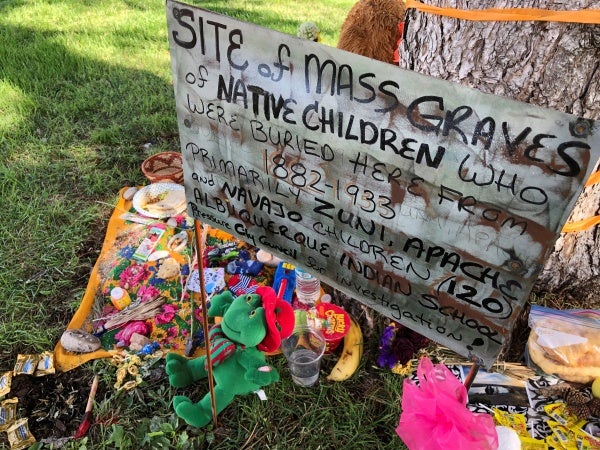Lire la version en français / Lea la versión en español
The government took hundreds of thousands of children away from their families. They did so systematically and with violence. Authorities often then subjected these children to forced labor; starvation; and sexual, physical, and psychological abuse. They sometimes even killed these kids and buried them in unmarked graves.
All this happened in the United States of America.
For a century and a half, the US federal government ran a system of so-called “Indian boarding schools,” operated in collaboration with religious institutions. There were 408 such boarding schools designed to remove children from their families, separate them from their communities and land, and try to overwrite their culture.
The stated intent of the program, which ran from 1819 to 1969, was to take an Indigenous child, “kill the Indian in him, and save the man.”
Ongoing research is revealing the extent of the abuses. Many of the deaths were covered up. However, the US Department of the Interior says the number of children killed is likely to be “in the thousands or tens of thousands.”
Yet, like other grim aspects of US history, even recent history, the Indian boarding school system remains unknown to many Americans today.
Some folks are trying to change that.
Boarding school survivors and Native advocates have been working with US Congressional lawmakers to push forward federal legislation that would establish a Truth and Healing Commission to examine the full range of abuses in the boarding school system.
The new federal commission would document the impacts of boarding school policies, hold public hearings to collect testimony from survivors and descendants, and examine the locations of missing children. It would aim to provide a list of recommendations for further healing.
This is all long overdue for so many reasons, but perhaps most importantly because this is not ancient history; it’s in living memory. The legacy of this cruel and murderous system continues to be felt by Indigenous people in the US today: intergenerational trauma, higher rates of poverty, and loss of language, land, traditions, and culture.
It’s time for the United States to face the truth about this dark chapter in the country’s story.









